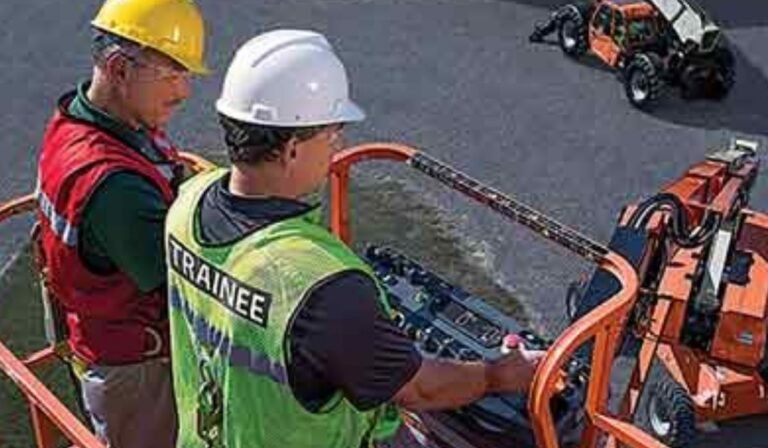Workplace safety is a top priority for organizations across all industries, and lift equipment plays a critical role in safeguarding personnel working at heights or transporting goods between floors. As businesses continue to seek ways to bolster safety and efficiency, the latest advancements in lift technology have set new benchmarks—not only for accident prevention but also for smarter, seamless operations.
Solutions such as advanced anchoring systems and integrated monitoring tools are now reshaping industry expectations. To explore a full range of innovative lifts, visit https://www.platformsandladders.com/lifts.
Investing in contemporary lift equipment goes beyond merely meeting minimum compliance; it’s about adopting best practices that enhance employee confidence and minimize operational risks. By leveraging the power of digital connectivity, real-time data analytics, and touchless controls, companies are creating safer environments while also addressing the unique needs of various workplaces—from healthcare settings that require high hygiene standards to manufacturing floors prone to hazardous conditions.
Operator Safety Innovations
Protecting lift operators from potential hazards is the cornerstone of recent safety innovations. Systems such as FASTN serve as a prime example, providing active, universal anchoring for Mobile Elevating Work Platforms (MEWPs). This technology is designed to promote safer operator behaviors, making the prevention of falls an everyday reality rather than an occasional hope.
Features like visual and audible alerts remind users to stay anchored, dramatically reducing the likelihood of injury. According to the Occupational Safety and Health Administration, falls remain a leading cause of workplace injuries, underscoring the need for proactive safety measures.
Manufacturers are also focusing on ergonomic designs to reduce the risk of strain injuries. Improved control interfaces, enhanced visibility from operator stations, and better harness anchorage points all contribute to an environment where safety is embedded in daily operations.
Predictive Maintenance and IoT Integration
The integration of the Internet of Things (IoT) into lift equipment has fundamentally changed the maintenance landscape. Modern lifts are equipped with sensors that constantly monitor mechanical components.
These sensors transmit data in real time, allowing for predictive analytics to identify wear patterns or potential failures before they escalate into serious issues. This approach not only reduces unplanned downtime but also extends the lifespan of equipment and optimizes resource utilization.
Cloud-based analytics platforms utilize this sensor data to recommend maintenance only when necessary. Such precision streamlines schedules and ensures that lifts are continuously operating at peak safety and performance. Enhanced diagnostics allow service technicians to pinpoint problems more quickly, speeding up repairs and minimizing disruption.
This approach to maintenance also aligns with sustainability efforts, as fewer unnecessary service calls translate into reduced energy consumption and waste.
Touchless and Voice-Activated Controls
The pandemic brought new attention to minimizing touchpoints in shared environments, and lift manufacturers responded with rapid advancements in touchless and voice-activated controls. Users can summon lifts, select floors, and even activate emergency alarms using gestures or spoken commands—all without needing to touch physical buttons. These features not only improve hygiene but also make lifts more accessible for individuals with disabilities, aligning with universal design principles.
Enhanced user interfaces leverage smartphone integration and proximity sensors, enabling personalized settings and eliminating the need to handle commonly used surfaces. These upgrades are proving critical in high-traffic facilities such as hospitals, office towers, and public transportation hubs.
Enhanced Safety Features
Beyond preventive solutions, modern lift systems incorporate robust responses for emergency scenarios. Upgrades include two-way video communication between lift occupants and building security or emergency personnel, providing reassurance and rapid assistance during crises. Real-time lift condition monitoring and location tracking enable maintenance teams and responders to act quickly in the event of issues.
Some advanced models are equipped with seismic sensors and automatic recall functions, ensuring that in the event of earthquakes or power failures, lifts safely transport occupants to the nearest available floor. Integration with building-wide alarm systems enables lifts to respond instantly to fire or security emergencies, enhancing overall occupant protection.
Integration with Smart Building Ecosystems
The next evolution in lift systems is their integration into larger building management platforms. Advanced lifts now synchronize with lighting, HVAC, surveillance, and access control systems, delivering a seamless building experience. Smart access cards can automatically summon lifts when occupants enter a building, while real-time occupancy data optimizes lift dispatch and energy usage.
This holistic approach streamlines building operations and enhances safety. For example, a centralized monitoring system can detect if an unauthorized person is attempting to access restricted floors and automatically lock out commands from the lift’s control panel, improving security for sensitive areas.
Compliance with Updated Safety Standards
Elevating workplace safety also depends on meeting evolving standards. The latest ANSI requirements mandate crucial updates like active platform load-sensing, enhanced wind load testing, and more rigorous stability evaluations for MEWPs. These changes require both manufacturers and employers to regularly review and update their equipment and operating procedures to ensure compliance. Staying current not only ensures compliance but also demonstrates a proactive commitment to worker welfare. For more information on these standards, refer to the ANSI A92 MEWP Standards.
Industry organizations and regulatory bodies, such as the American National Standards Institute (ANSI) and the Occupational Safety and Health Administration (OSHA), provide ongoing guidance to help companies navigate the latest in lift safety best practices.
Conclusion
Lift equipment safety has progressed rapidly to meet the challenges of modern workplaces. Through innovations in operator protection, predictive maintenance, touchless controls, and integration with intelligent building systems, today’s lifts provide unprecedented levels of protection and efficiency. Adhering to updated standards and embracing these advancements empowers organizations to create safer, more productive environments for all workers.
